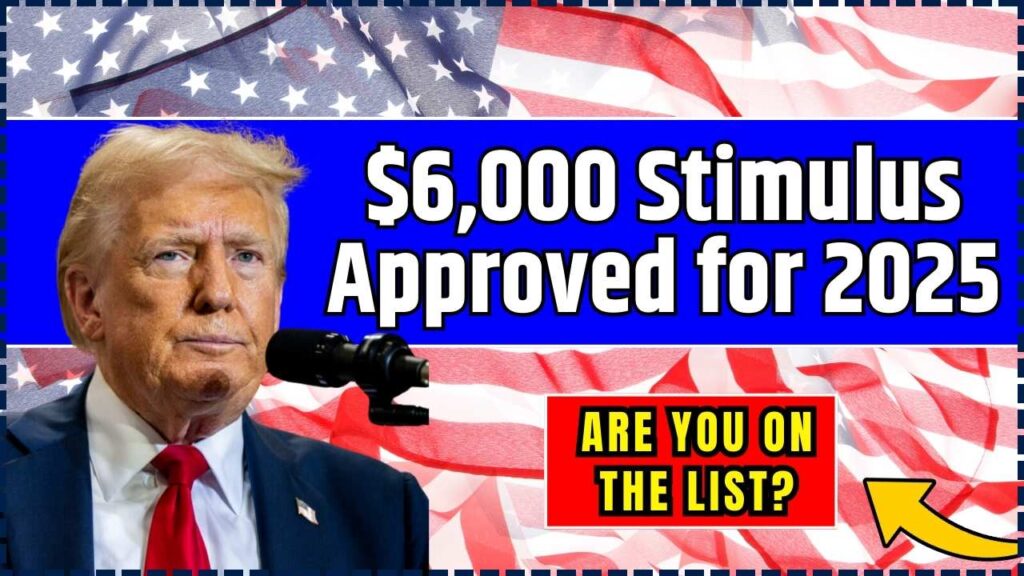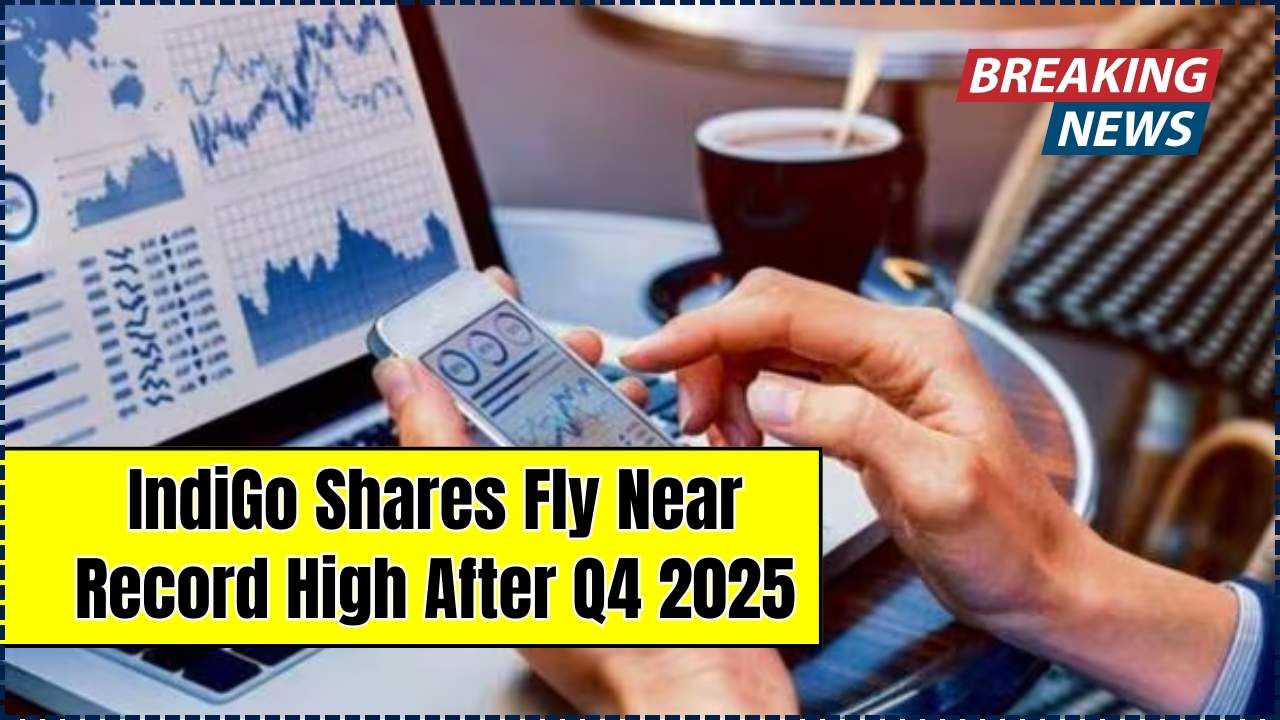$6,000 Stimulus Approved for 2025: If you’re struggling to make ends meet in 2025, there’s promising news that could offer some financial relief. The $6,000 stimulus approved for 2025 is making headlines across several U.S. states, offering $500 monthly checks for eligible residents. But this isn’t a one-size-fits-all federal program—it’s a state-driven initiative aimed at supporting vulnerable communities in an ongoing and sustainable way.

As inflation and the cost of living continue to rise, programs like these are becoming vital tools for helping low- and moderate-income households. Let’s explore what this new stimulus means, how it works, and who qualifies.
$6,000 Stimulus Approved for 2025
The $6,000 stimulus approved for 2025 is more than a headline—it’s a practical lifeline for thousands of Americans. If you live in a participating state and meet the requirements, this program could help you catch up on bills, build savings, or just breathe easier each month. Stay proactive: Apply as soon as the portal opens.
| Feature | Details | Impact |
|---|---|---|
| Total Benefit | $6,000 over 12 months ($500/month) | Long-term financial relief |
| Participating States | California, Michigan, Washington, New Mexico, New York | State-managed stimulus support |
| Eligibility | Low-income, SSI/SSDI recipients, single parents, ZIP-code specific residents | Focus on underserved populations |
| Application Process | Online through local/state portals; documentation required | Open for a limited time |
| Payment Methods | Direct deposit or mailed checks | Flexible and accessible |
| Taxation | Generally non-taxable | No impact on income taxes |
| Program Timeline | Ongoing through 2025 in most regions | Sustained monthly support |
What Is the $6,000 Stimulus for 2025?
Unlike the one-time federal stimulus checks seen during the COVID-19 pandemic, the $6,000 stimulus program for 2025 provides monthly payments of $500 over 12 months. That adds up to $6,000 annually—a more stable and predictable form of support.
The goal? To reduce financial stress, promote housing stability, and improve the overall quality of life for low-income families and individuals who often fall through the cracks of federal assistance.
These programs are mostly state-funded and operate under the umbrella of guaranteed income pilot programs or economic relief initiatives. They are not available nationwide, but in select states and counties.
States Offering $500 Monthly Checks in 2025
Several states have introduced or expanded these guaranteed income programs. Let’s take a closer look at where you can apply:
California
California has been at the forefront of guaranteed income programs. Through partnerships with nonprofits and municipalities, the Franchise Tax Board (FTB) and local agencies have launched multiple pilots targeting:
- Single parents
- People with disabilities
- Undocumented immigrants
- Low-income residents in ZIP codes hardest hit by COVID-19 and economic downturns
You can learn more at the Franchise Tax Board.
Michigan
In Michigan, some counties are distributing $528/month to a small group of participants. These programs are still in pilot stages but are expected to be expanded in 2025 based on positive initial outcomes. The focus is on families living below 200% of the federal poverty line.
Washington
Washington state has committed to ongoing disbursements through various city-based pilots, including one offering $500 monthly checks to qualifying households through June 2025.
New Mexico & New York
Though details vary, these states have launched regional stimulus-style aid, targeting marginalized communities. Local governments, not the state itself, typically administer the programs.
Eligibility Requirements
Eligibility varies by state, but most programs follow a similar set of core criteria:
Common Factors:
- Income: Most programs target households earning less than 200% of the federal poverty level.
- Residency: You must reside in the participating state and, in some cases, a specific ZIP code or neighborhood.
- Demographics: Priority may be given to:
- Single parents
- People with disabilities
- Senior citizens
- Young adults aging out of foster care
- Enrollment in Benefits: Receiving SSI, SSDI, SNAP, or Medicaid may increase eligibility odds.
- Be sure to check with your local Department of Human Services or state’s official website.
$6,000 Stimulus Approved for 2025 Apply Guide
If you live in one of the participating states and think you qualify, follow these steps:
- Visit Your State’s Official Portal: Each state has a separate site or page for the stimulus application. This could be through the tax board, human services, or a dedicated pilot program website.
- Gather Documents: Prepare the following:
- Photo ID
- Proof of residence (utility bill, lease agreement)
- Proof of income (pay stub, benefit letter)
- Tax return or W-2
- Bank details for direct deposit (optional but faster)
- Complete the Online Application:
- Be honest and thorough.
- Double-check your information before submitting.
- Some portals allow you to track your application status.
- Wait for Approval: Most applicants hear back within 30–60 days. You’ll be notified by email or letter with approval or rejection.
- Receive Your Funds: If approved, payments are typically made monthly via direct deposit or mailed checks.
Real-Life Impact: How These Checks Help
Imagine you’re a single mother in California, working part-time and caring for two children. You’re barely keeping up with rent, groceries, and utilities. An extra $500 per month could mean:
- Paying off utility debt
- Buying nutritious food
- Covering childcare so you can take on more hours
Or consider a senior on SSI in Michigan, living on a fixed income. With housing costs skyrocketing, a $500 monthly supplement might keep them housed and out of long-term care.
Programs like these do more than just put money in people’s pockets—they reduce stress, prevent homelessness, and improve mental health outcomes.
Who Qualifies for the $1550 Stimulus Check in 2025? Check Payment Dates!
$1390 Stimulus Payment In May 2025: Are You Eligible to Get it? Check Payment Dates!
FAQs On $6,000 Stimulus Approved for 2025
Q1: Is this a federal stimulus?
No. The $6,000 stimulus is state-run, with programs launched independently by local governments.
Q2: Can I apply if I don’t live in a participating state?
No. You must be a resident of one of the states running the program.
Q3: Will this affect my federal benefits?
Usually not. But it’s wise to check with a benefits counselor or caseworker.
Q4: Do I have to pay taxes on the $6,000?
Most states treat it as non-taxable income. However, always verify with your state’s Department of Revenue.
Q5: Can I be denied?
Yes. If you don’t meet income, residency, or documentation requirements, your application may be rejected.
What Experts Say About Guaranteed Income
Researchers studying guaranteed income programs—including economists at Stanford and the University of Pennsylvania—have found that:
- Participants are more likely to find stable employment
- Financial stress and depression rates decrease
- Children in recipient households perform better in school
Experts believe such programs are not only compassionate but cost-effective, reducing the burden on emergency services, shelters, and hospitals.
What’s Next: Will the Program Expand Nationwide?
While there is no federal plan to replicate this stimulus model across all 50 states, the success of these pilot programs could pave the way for future legislation. Advocacy groups are already pushing for broader support, especially as economic pressures continue in 2025.
Your voice matters. If you’re benefiting from or believe in these programs, consider:
- Writing to your state representative
- Supporting advocacy organizations
- Participating in feedback surveys from your local stimulus program






